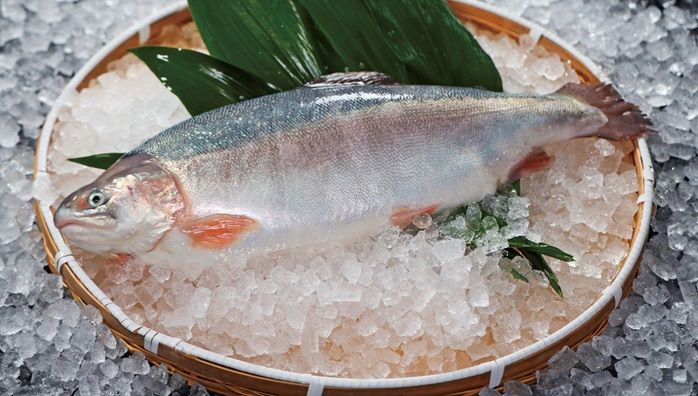
The grown salmon are harvested with nets at FRD Japan's plant in Kisarazu, Chiba Prefecture. (Image courtesy of FRD Japan)
Read the full story on Japan 2 Earth - FRD Japan Satisfies Sushi Demand with Water-Efficient Salmon Farming
A startup company that farms salmon near Tokyo and delivers it fresh is gearing up to make a splash. Established in 2013, Saitama-based FRD Japan uses tap water for its land-based aquaculture. The company has developed a unique filtration technology that requires almost no water changes. This allows for a stable production that can be easily shipped to nearby major markets. While production is currently small scale, FRD is working to launch mass production in three years.
Salmon Is Number One
Salmon is a popular choice at conveyor belt sushi restaurants. An annual consumer survey by seafood giant Maruha Nichiro has shown salmon to be the most popular sushi fish for 13 consecutive years. Surpassing tuna, salmon has established its position as the number one favorite. Its rich and fatty taste is reported to be the reason behind its prevalence. A versatile fish, it can also be prepared in a variety of ways atop sushi rice, such as adding onions.

Salmon has the highest per capita consumption among fish at an annual 300,000 tons. Most are imports of ocean-raised fish from Chile and Norway that are transported frozen from the opposite side of the planet. The freezing process affects both taste and texture. That is why FRD Japan opted to compete by offering fresh, never-frozen farmed salmon.
Continue reading the full story on Japan 2 Earth to read more about FRD Japan's water-efficient salmon farming.
And find more great articles on the environment and the challenges of achieving the SDGs on our affiliated website Japan 2 Earth (J2E), sparking a transition to a sustainable future.
RELATED:
- Making Aquaculture More Sustainable: Marubeni Farms Yellowtail on Insect-Based Feed
- Salmon War: Why is an Energy Giant Diving into Land-Based Aquaculture?
- How Onshore Aquaculture Could Achieve a Reliable Seafood Supply
(Read the article in Japanese.)
Author: Katsufumi Sato







